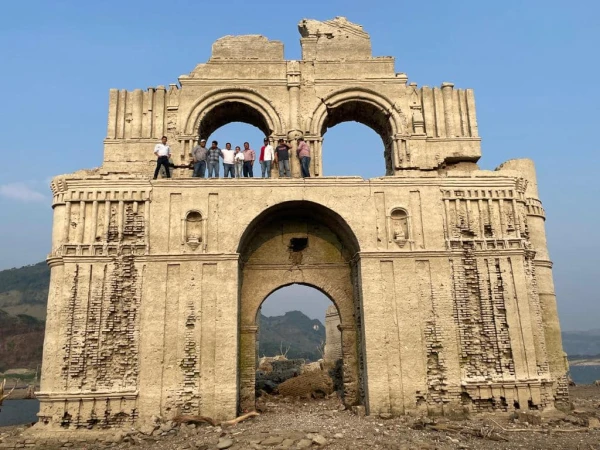ACI Prensa Staff, Jun 21, 2023 / 12:15 pm
Due to an intense heat wave and drought that has spread in various parts of Mexico, a more than 400-year-old Catholic church has completely emerged from the waters in the state of Chiapas.
The church of the disappeared town of San Juan Quechula, dedicated to the apostle James the Greater and built by Dominican friars who evangelized the region headed by friar Bartolomé de las Casas in the 16th century, was flooded in 1966 with the construction of the Nezahualcóyotl hydroelectric dam, also known as the Malpaso Dam.
In recent years, the upper part of the church had remained visible and tourists could approach it using boats.
No pierdan la oportunidad de visitar la imponente Iglesia de Quechula que emerge de las aguas del río Grijalva en el estado de Chiapas. Foto: @ upatty7 pic.twitter.com/zvINKouwIS
— Avis México (@AvisMexico) May 27, 2019
However, this year’s drought has allowed the centuries-old Catholic church to be visible in its entirety.

This is one of at least seven churches that are “buried” under water or stone in different regions of Mexico.
According to the Tecpatán City Hall website, it is estimated that the church was built between 1564 and 1606, although “it was abandoned in 1776 due to a series of plagues that affected the surrounding communities.”
On June 9, the Municipality of Tecpatán announced that the church “has been notoriously visible” in the last two months due to “the lack of rain in our region.” In addition, the authorities have ordered that the area be cleaned and that “timely attention” be given to visitors.
Gilberto Hernandez, head of the diocesan communications commission for the Archdiocese of Tuxtla Gutierrez, acknowledged in a statement that the church can be seen at least partially every year.
“The lowering of the level allows one to contemplate the great structure of the church, which has resisted the passage of time and the onslaught of water,” he said, emphasizing that this year the entire building can be seen “due to the drought and the delay of the rainy season.”
The current conditions, he pointed out, allow “that it is no longer necessary to reach the church by boat, but now access can even be by van or motorcycle, and therefore, the magnitude of the beautiful Dominican church can be better appreciated.”
According to Mexico’s Drought Monitor, “in the first two weeks of June 2023, rain deficits were observed in a large part of the national territory.” In regions of Chiapas, the drought category was raised from moderate to severe.
In the current heat season, which according to Mexican authorities extends from March 19 to October of this year, close to 500 people have been affected, with ailments ranging from a sudden increase in body temperature to loss of consciousness.
In addition, eight deaths have been reported in the states of Veracruz, Quintana Roo, Sonora, and Oaxaca due to the excessive heat.
This story was first published by ACI Prensa, CNA’s Spanish-language news partner. It has been translated and adapted by CNA.
(Story continues below)





